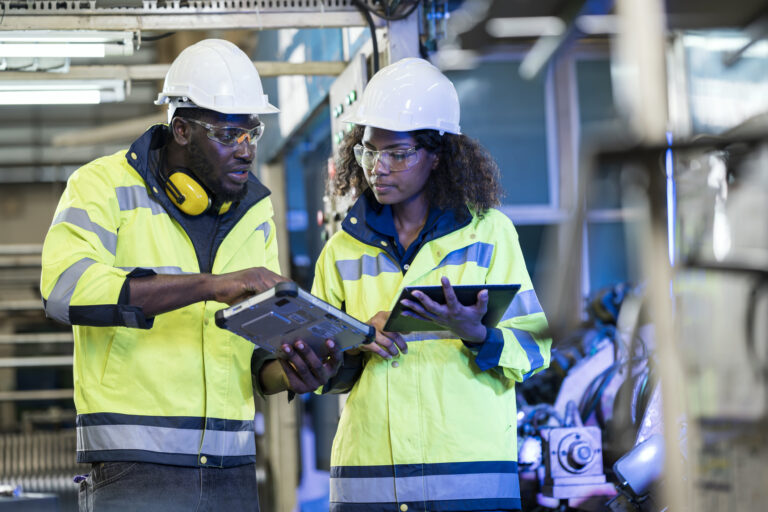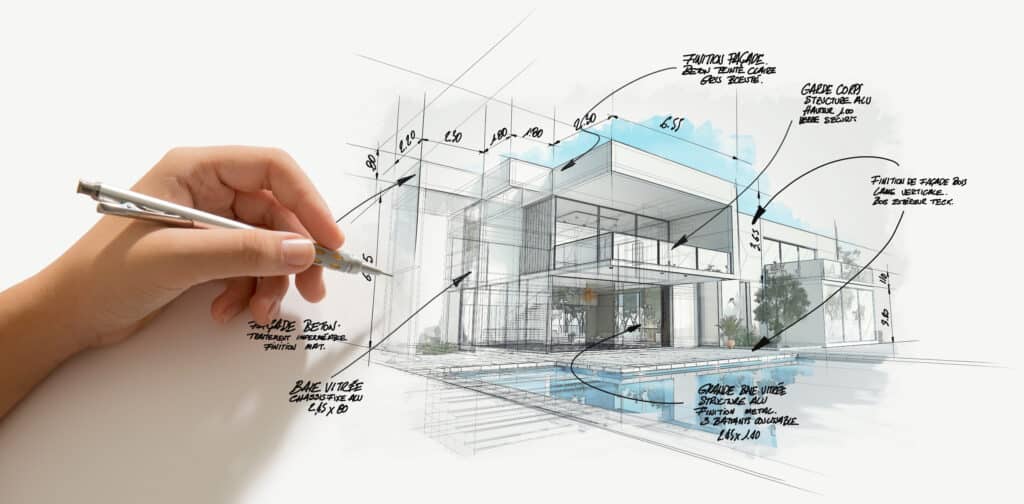Architect Insights on Harmonizing Form and Function
Architect Insights on Harmonizing Form and Function
Blog Article
The Function of Sustainability and Technology in Modern Architect Practices
Sustainability and modern technology are improving modern style in methods you might not anticipate. By accepting environment-friendly materials and clever advancements, architects are not simply creating structures; they're crafting atmospheres that enhance our lifestyle. This change isn't just concerning appearances or performance; it has to do with creating an accountable approach to our world's future. What's driving this change, and just how can these modifications influence your neighborhood?
The Importance of Sustainable Style
Lasting architecture is necessary not simply for the environment however additionally for enhancing our lifestyle. When you welcome lasting design, you're not just minimizing your carbon impact; you're developing spaces that promote health and wellness and wellness. Envision residing in a home that harnesses natural light, improves air top quality, and reduces energy prices. You'll really feel a lot more comfortable and connected to nature.
Furthermore, sustainable architecture frequently leads to stronger areas. When structures are developed with environment-friendly methods, they can influence others to follow suit, cultivating a society of sustainability. You'll discover enhanced residential property values and a greater feeling of satisfaction in your surroundings.
Lastly, by focusing on sustainability, you're buying the future. You're guaranteeing that future generations enjoy a much healthier world and vibrant areas. So, when you consider your following project, think of how lasting design can elevate your life and those around you.
Ingenious Materials Changing Building Practices
As you check out innovative products in architecture, you'll locate that biodegradable building and construction materials are improving how we consider sustainability. Recycled web content developments are offering new life to waste, while clever material modern technologies enhance developing efficiency. These improvements not just promote eco-friendliness yet also press the boundaries of layout.
Eco-friendly Building And Construction Materials
While conventional construction materials frequently contribute to ecological destruction, eco-friendly building materials are emerging as a viable choice that changes building practices. By incorporating eco-friendly alternatives into your designs, you're not simply improving aesthetic appeal; you're additionally making a favorable effect on the planet. As you adjust to these ingenious materials, you'll locate that they use toughness and flexibility, enabling you to develop structures that align with modern-day values of sustainability and responsibility.
Recycled Web Content Developments
Recently, cutting-edge materials with high recycled web content have actually revolutionized structure methods, offering designers exciting brand-new options - Architect. You can currently incorporate products like recycled steel, which not only lowers waste however also boasts impressive stamina. Recycled glass is another amazing choice, supplying visual appeal while reducing environmental impact

Smart Material Technologies
Smart product modern technologies are improving the way you think regarding building methods, using vibrant solutions that adapt to altering problems. These cutting-edge materials, such as self-healing concrete and thermochromic glass, enhance structure performance and sustainability. When damaged-- these advancements are no longer simply concepts, imagine structures that can adjust to temperature level adjustments or fix themselves. By incorporating clever products, you can produce energy-efficient layouts that react to their setting, decreasing overall power usage. The capacity to monitor and adapt in real-time streamlines upkeep and prolongs the life-span of structures. As you embrace these innovations, you're not simply innovating; you're adding to a much more sustainable future in design, combining functionality with environmental responsibility.
The Integration of Smart Technologies in Layout
As modern technology progresses, integrating clever remedies right into building style comes to be vital for producing efficient and lasting spaces. You can integrate wise modern technologies like constructing monitoring systems, which maximize energy usage and improve occupant convenience.
Incorporating Web of Things (IoT) gadgets enables seamless interaction among numerous building systems, allowing you to make data-driven choices that enhance capability. Smart materials that respond to ecological modifications can further improve your layout, giving vibrant solutions to ever-changing conditions.
Energy Performance and Renewable Power Solutions
While numerous engineers concentrate on visual appeals, focusing on energy effectiveness and renewable resource solutions is crucial for sustainable layout. You can start by integrating passive solar style, which enhances natural light and heat, decreasing reliance on synthetic lights and furnace. Make use of high-performance insulation and energy-efficient home windows to minimize energy loss.
Don't ignore renewable power systems-- install solar panels or wind generators to create tidy energy on-site. You can likewise consider including geothermal heating and cooling systems for an extra lasting temperature guideline.
By selecting energy-efficient devices and illumination, you'll not just lower power intake yet also lower operational costs for developing passengers.
Incorporating these concepts right into your designs not only benefits the environment however also boosts the structure's allure and value. Eventually, your commitment to power efficiency and sustainable energy will set your tasks apart in an open market.
Water Preservation Methods in Modern Architecture
Incorporating water preservation strategies into contemporary style is necessary for creating sustainable buildings that reduce environmental impact. You can accomplish this by incorporating rain harvesting systems, which save and accumulate rain for irrigation and non-potable uses. Applying low-flow components and smart watering systems additionally lowers water consumption, making sure effective usage throughout the structure.
Think about using drought-resistant landscaping, which calls for much address less water and promotes biodiversity. Integrating absorptive paving products permits rain to penetrate the ground, decreasing runoff and recharging groundwater supplies.
In addition, installing greywater recycling systems can repurpose water from sinks and showers for toilet flushing or watering, further preserving sources.
The Effect of Biophilic Design on Well-Being
Biophilic design brings nature inside your home, and you'll discover its favorable results on your health and happiness. By improving indoor air high quality and attaching you with natural environments, these spaces can transform your everyday experience. Let's explore how incorporating these see here functions can boost your general health.
Nature's Impact on Health and wellness
When you integrate elements of nature into your surroundings, it can substantially improve your physical and psychological health. Biophilic design, which emphasizes all-natural light, plants, and organic products, promotes a sense of connection to the outdoors. Welcoming biophilic layout is a step towards a much healthier way of living.
Enhancing Indoor Air High Quality
While numerous individuals focus on visual appeals and performance in style, improving indoor air quality plays an essential role in your general well-being. By incorporating biophilic style aspects, you can improve air top quality normally. Focusing on these elements in your design will certainly not only elevate your area yet also advertise a sense of calm and wellness.
Connection With All-natural Aspects
When you get in touch with natural environments in your room, you not only improve its aesthetic allure yet also greatly boost your well-being. Biophilic style motivates you to include features like plants, natural light, and natural materials. These components create a calming atmosphere, decreasing stress and anxiety and stress and anxiety. Study shows that being around nature can improve your mood and cognitive feature, assisting you really feel more effective and concentrated. When you invite the outdoors inside, you could observe much better air high quality and enhanced comfort. Straightforward modifications, like including a living wall surface or big windows, can profoundly influence this hyperlink your experience (Architect). Eventually, integrating nature into your atmosphere leads you to a healthier, better way of living, promoting a deeper link to the globe around you.
Future Trends in Lasting Building Practices
As the globe encounters pushing ecological challenges, architects are progressively embracing cutting-edge approaches to sustainability that redefine exactly how we design and build. You'll see a surge in biophilic layout, incorporating nature right into metropolitan spaces to enhance health and reduce power intake. Smart innovations, like AI and IoT, are enhancing power monitoring in buildings, maximizing source use, and minimizing waste.
In addition, modular building is obtaining traction, enabling faster, more reliable structure processes while decreasing ecological impact. Using lasting materials, such as reclaimed timber and recycled steels, is ending up being conventional method. As you discover these fads, anticipate a change towards circular style, stressing the lifecycle of materials and advertising reuse and recycling.
These forward-thinking approaches not just address eco-friendly worries however also create much healthier, more durable areas. By remaining notified regarding these patterns, you can aid form a sustainable future in design.
Regularly Asked Questions
How Can Sustainability Affect Project Expenses and Budgets?
Sustainability can substantially affect task expenses and budgets. You could find that initial financial investments in environmentally friendly materials or innovations lead to long-lasting financial savings with power effectiveness, decreased waste, and possible federal government incentives, ultimately stabilizing the overall costs.
What Accreditations Exist for Sustainable Design?
You'll discover numerous certifications for sustainable style, consisting of LEED, BREEAM, and the Living Building Difficulty. These qualifications assist you show your dedication to sustainability and can enhance your task's trustworthiness and interest customers.
How Does Neighborhood Culture Influence Sustainable Layout?
Regional society shapes sustainable layout by mirroring community values, customs, and materials. You'll find that incorporating regional aesthetics and practices not just appreciates heritage however also boosts the performance and approval of your architectural jobs.
What Duty Does Customer Education Play in Lasting Practices?
Client education and learning's crucial for promoting lasting techniques. When you notify customers about advantages, prices, and ecological impacts, you encourage them to make enlightened decisions, promoting a collaborative strategy that enhances the task's overall sustainability.

Exactly How Can Architects Gauge the Success of Sustainability Campaigns?
You can measure the success of sustainability campaigns by tracking energy intake, evaluating material effectiveness, and celebration responses from clients. Regular audits and contrasts against criteria will certainly aid you refine your approaches and display enhancements successfully.
By incorporating smart materials, you can create energy-efficient designs that respond to their setting, minimizing total energy consumption.While lots of architects focus on appearances, prioritizing power efficiency and eco-friendly power options is important for lasting style. Biophilic design, which highlights all-natural light, plants, and natural products, cultivates a sense of link to the outdoors. Biophilic design encourages you to incorporate attributes like plants, natural light, and natural materials. As you explore these patterns, expect a change toward round style, emphasizing the lifecycle of products and promoting reuse and recycling.
Report this page